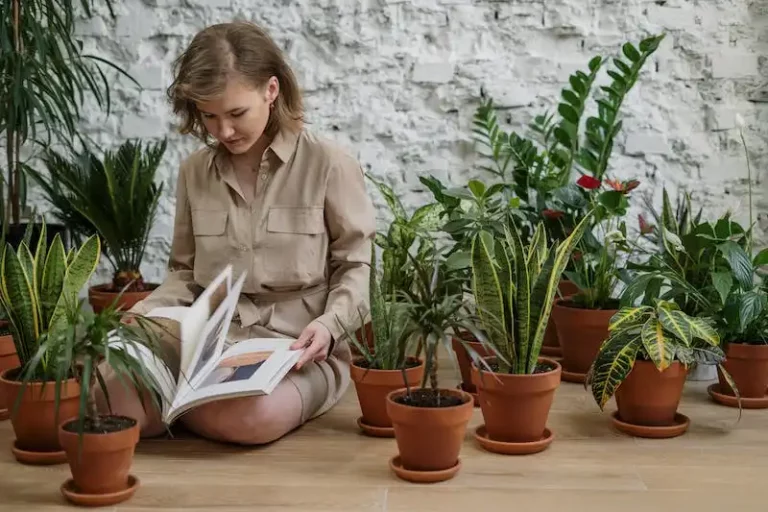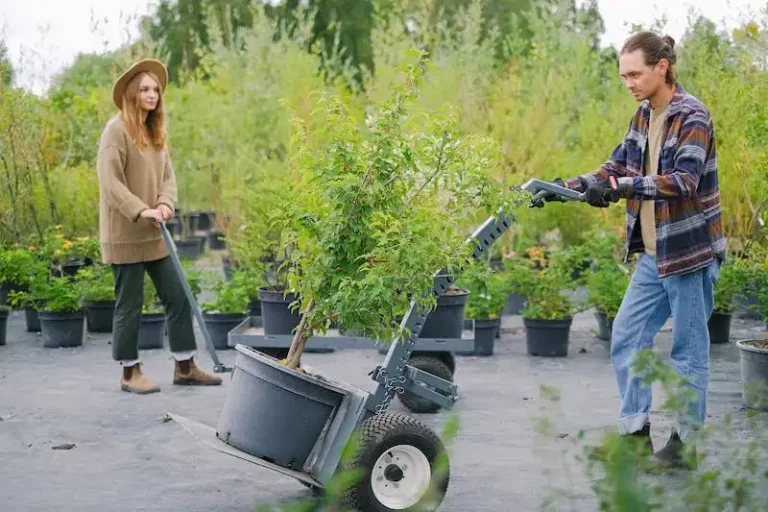If you’ve ever wondered what vermiculite is and how it can be useful to you, then you’ve come to the right place. Vermiculite is a permanent and versatile growing medium that can be used in various gardening activities. It is a mineral that is mined and then heated in order to expand and form small, lightweight flakes.
Vermiculite is often used to cut down on the necessary additives and moisture in growing mediums. It can even be used as a standalone medium when growing certain plants. One of its useful qualities is its ability to hold a large amount of water while still providing good drainage and aeration for plant roots. This makes it a great choice for times when plants need consistent moisture, but you don’t want to risk overwatering them.
One of the main differences between vermiculite and other growing mediums is its ability to hold nutrients. Vermiculite contains a range of essential minerals, such as aluminum-iron silicates, that can be beneficial for plant growth. This mineral-rich growing medium can help plants grow rapidly and produce bountiful harvests.
If you’re wondering how to effectively use vermiculite in your gardening, here are four tips to get you started:
- When using vermiculite to sow seeds, mix it with soil in a 1:1 ratio. This will create a sterile mixture that provides a good balance of water retention and drainage for germination.
- If you’re creating a rooting medium for cuttings, mix vermiculite with perlite in a 1:1 ratio. This combination will provide excellent aeration and drainage, which are essential for root development.
- When potting houseplants, mix vermiculite with soil to make a lighter and more moisture-retentive mixture. This will help prevent overwatering and make it easier for the plants to establish in their new containers.
- For bigger gardening projects, such as planting lawns or filling large containers, you can use vermiculite as a soil cover. This will help retain moisture and improve the overall soil structure.
While vermiculite has many advantages, it’s important to note that it also has some disadvantages. One of the main concerns is that vermiculite can contain traces of asbestos, a harmful substance. However, vermiculite made for horticultural improvement is often screened and processed to remove the asbestos fibers, making it safe for gardening use. Additionally, vermiculite can be expensive and difficult to find in some areas.
In conclusion, vermiculite is a versatile and useful growing medium for gardens of all sizes. Its ability to retain moisture, provide good drainage, and hold nutrients makes it an excellent choice for a variety of gardening applications. Whether you’re sowing seeds or transplanting houseplants, vermiculite can help improve your gardening success.
What is Vermiculite? What is it used for?
Vermiculite is a natural mineral that is commonly used in gardening and horticulture. It is a permanent, non-toxic, and odorless substance with a variety of useful properties. Vermiculite is often used as a soil amendment or potting mix additive to improve soil structure and moisture-holding capacity.
One of the main uses of vermiculite is as a medium for starting seeds. Its ability to hold water and provide aeration makes it a great option for germination. Vermiculite can also be used in rooting cuttings, as it helps the cuttings retain moisture and enhances root development.
Vermiculite is highly absorbent and can hold up to 150% of its weight in water. This makes it particularly useful for moisture-loving plants or for areas with dry or sandy soils.
One of the advantages of using vermiculite is its neutral pH, which means it won’t affect the acidity or alkalinity of the soil. This makes it suitable for a wide range of plants with varying pH needs.
Vermiculite is made from a type of volcanic rock that is mined from deposits found all over the world. The rock is heated, causing it to expand and become a lightweight material with a unique “swiss cheese” shape. The expanded vermiculite particles have tiny air pockets that help improve aeration in the soil and promote root growth.
When compared to other soil amendments like peat moss or compost, vermiculite has its own set of advantages and disadvantages. Some gardeners prefer vermiculite because it is lightweight and easy to handle, and it doesn’t break down or decompose over time. It also doesn’t compact like soil or other organic matter, allowing for better water drainage.
However, vermiculite is not without its drawbacks. It can be expensive, especially when compared to other soil amendments. Some people may also be concerned about the environmental impact of mining vermiculite, as it is a non-renewable resource. Additionally, vermiculite can be dusty, so it’s important to handle it carefully and wear protective gear when using it.
Overall, vermiculite is a versatile and useful material for gardeners and horticulturists. Whether it’s for improving soil structure, starting seeds, rooting cuttings, or providing moisture to plants, vermiculite has a range of qualities that make it a popular choice in various gardening applications.
What Is Vermiculite
Vermiculite is a mineral that is commonly used by gardeners and horticulturists for various purposes. It is a natural, lightweight, and highly absorbent material that has many benefits when it comes to gardening.
Vermiculite is often used in seed germination as it helps to retain moisture and provides a stable environment for seedlings to grow. It also has the ability to prevent soil compaction, which can be a common problem in gardens. Additionally, vermiculite can be used to improve the drainage and aeration of soil when added as an additive to potting mixes.
One of the main advantages of using vermiculite is its ability to retain water. This makes it particularly useful for plants that require a higher moisture content such as houseplants or plants that are sensitive to drying out.
In gardens, vermiculite can be used to help with rooting cuttings by providing a suitable growing medium. It can be mixed with other materials such as perlite to create a well-draining and nutrient-rich environment for the roots to grow. Vermiculite is also frequently used as a top layer for growing bulbs, as it provides insulation and retains moisture.
When purchasing vermiculite, it is necessary to take some precautions. It is important to ensure that the vermiculite is asbestos-free, as older vermiculite products may contain traces of asbestos. It is always recommended to buy from reputable sources to ensure safety.
Vermiculite can be used in a variety of ways in the garden. It can be mixed into the soil to improve its texture and water-holding capacity. It can also be used as a top layer for sowing seeds or as a covering to retain soil moisture. Additionally, vermiculite can be used as a growing medium for houseplants or added to potting mixes to improve drainage and aeration.
Despite its numerous benefits, there are some cons to using vermiculite. It can be difficult to move once it is wet, as it tends to stick together. It is also more expensive compared to other growing mediums such as peat moss. Additionally, vermiculite particles can be irritating to the skin and lungs, so it is important to handle it with care and wear protective gear when handling large amounts.
In conclusion, vermiculite is a versatile material that can enhance gardening practices. Its ability to retain moisture, improve drainage, and provide insulation makes it a valuable addition to any garden. Whether you are starting seedlings, rooting cuttings, or growing sensitive plants, vermiculite can help you achieve better results.
How Is It Made
Vermiculite is a naturally occurring mineral that is widely used in gardening as a growing medium. It is made by heating a mineral called “mica” to a high temperature. This process causes the mica to expand and become lightening. The risk of added aluminum-iron content is generally considered low, making it a safe option for gardening.
Vermiculite is often used in seed starting and rooting cuttings due to its unique properties. It holds moisture and nutrients effectively, making it a necessary component in many potting mixes. This moisture retention helps to keep the growing medium consistently moist, which is beneficial for sensitive seed sowings and young plants such as flowers and seedlings.
One of the advantages of using vermiculite as a growing medium is its excellent drainage and aeration properties. The expanded particles create air pockets within the soil, promoting oxygen flow to the plant’s roots. This feature is particularly essential for plants that are sensitive to overwatering or for those that require sufficient oxygen at the root level.
When it comes to making potting mixes, vermiculite also helps to loosen heavier soils and improve the drainage. By mixing it with soil, gardeners can create a more balanced and well-draining growing medium. This is especially useful for potted plants and container gardening, where proper drainage is necessary to prevent waterlogging and root diseases.
In addition to its uses in gardening, vermiculite is frequently used for insulation and as a seed coating. It is often mixed with other materials to make lightweight concrete, plaster, and fire-resistant materials. Vermiculite pellets, small particles of expanded vermiculite, are also used in storage to keep items dry and prevent moisture problems.
Now that you know how vermiculite is made and its many uses, here are some frequently asked questions to help you better understand this versatile material:
- What’s the difference between vermiculite and perlite? While both vermiculite and perlite are used as growing mediums, they have different properties. Vermiculite holds more moisture and has better nutrient retention, while perlite provides excellent drainage. Both can be used together to create a more balanced growing medium.
- What’s the difference between vermiculite and peat moss? Vermiculite and peat moss serve different purposes in gardening. Vermiculite helps with moisture retention and aeration, while peat moss provides acidity and helps improve soil structure. Mixing the two can create a well-rounded growing medium.
- Can I use vermiculite for starting seeds? Yes, vermiculite is an excellent medium for starting seeds. Its moisture retention and light texture make it ideal for sowing seeds and encouraging germination.
- How much vermiculite should I use in my potting mix? The amount of vermiculite to use depends on the plants and their specific needs. As a general rule, mixing about 25-30% vermiculite into the potting mix is a good starting point.
Hopefully, these tips and answers to common questions will help you understand why vermiculite is a valuable and versatile material for gardening and other applications.



